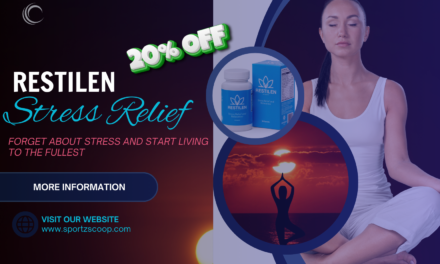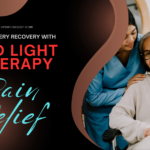
Optimal Frequency and Wavelength Settings for Red Light Therapy
Introduction
Red light therapy is filled with technical terms and scientific facts. But, the core idea is simple. The right wavelength and frequency can greatly benefit your body and mind. This is true whether you want to ease chronic pain, improve your skin, or boost your energy and recovery.
In this guide, we’ll explore the science behind red light therapy. We’ll look at the wavelengths and frequencies that offer the best results. You’ll learn about the cellular actions that make it work and the latest research on the best light settings. This knowledge will help you make smart choices and get the most from your red light therapy.
Image courtesy of NOVAALAB LLC
Key Takeaways
- Red light therapy usually uses wavelengths between 630-700 nanometers (nm), with 660nm being the most common.
- Optimal wavelengths for red light therapy range from 630-670nm. These offer many benefits like reduced wrinkles, better skin, hair growth, and less fatigue after exercise.
- Near-infrared (NIR) light, with wavelengths of 810-890nm, can reach deeper into the skin and tissues. It’s great for treating chronic pain and joint inflammation.
- The intensity, duration, and distance from the skin all affect how well red light therapy works.
- Using both red and near-infrared wavelengths can lead to better results. It targets a wider range of tissue types and cellular processes.
Understanding Red Light Therapy Basics
Red light therapy is a non-invasive treatment that uses red and near-infrared light. It stimulates cells deep in the skin. This therapy boosts circulation, reduces inflammation, and helps wounds heal faster.
It also encourages the skin to make more collagen and elastin. These are important for keeping the skin looking young and healthy.
How Red Light Therapy Works at Cellular Level
The therapy boosts the energy in cells by working with the mitochondria. It also activates a key enzyme in energy production. This leads to better blood flow, less inflammation, and faster tissue repair.
Key Components of Light Therapy Treatment
- Specific wavelengths of light, typically in the range of 610-850nm
- Appropriate power output to ensure effective light penetration
- Precise treatment duration for optimal results
Different Types of Light Therapy Devices
Red light therapy can be done with many devices. These range from small handheld units to big panels and beds. Each device is made for different treatment areas and needs.“In the 1990s, light-emitting diode (LED) technology was used to help grow potatoes in space with intense red LEDs.”
Red light therapy has shown great results for many health issues. It helps with wound healing, improves skin, and reduces cancer treatment side effects. By learning how it works and the types of devices available, you can see its benefits for your skin and pain management.
Optimal Wavelengths for Maximum Benefits
Red light therapy works best with wavelengths between 630 to 850 nanometers (nm). Research shows that 670nm and 830nm are especially good. They help improve the body’s chemical processes.
The 630-670nm range, or deep red, goes through the skin to reach cells. The 810-890nm range, or near-infrared, goes even deeper. It’s great for treating deeper wounds, joint pain, and muscle recovery.
- Wavelengths of 635nm and 810nm have shown to help healing.
- Red light therapy devices usually send out light between 620nm and 750nm.
- Near-infrared light is between 750nm and 1200nm.
The right Red Light Therapy settings for muscle recovery and Red Light Therapy settings for hair growth depend on the wavelength. Studies found that 670nm and 830nm are best for energy production in cells.
Expert Video courtesy of NOVAALAB LLC
“In red light therapy, wavelengths around 660nm and 850nm are often identified as being among the ‘best’ wavelengths for therapeutic benefits.”
Knowing the best wavelengths for red light therapy helps you get the most out of it. This is true for your health and wellness goals.
Frequency and Treatment Duration
Red light therapy’s success depends on how often and long you use it. Sessions usually last 10 to 20 minutes. It’s best to do them 3 to 5 times a week for the best results.Recommended Session Lengths
The best time for red light therapy varies by condition. Sessions of 10-20 minutes are usually best. This time lets your body soak up the light for healing and other benefits.Treatment Intervals for Different Conditions
- For skin and acne, 5-7 sessions a week for 10-20 minutes each are suggested.
- Those looking to ease pain might start with daily sessions, then cut back to 3-5 times a week.
- For healing wounds and growing hair, 5-7 sessions a week, each 10-20 minutes, are recommended.

Signs of Optimal Treatment Response
When red light therapy is working, you might feel less pain, see better skin, and recover faster. These signs mean your body is responding well to the treatment.
Always follow your device’s guidelines and talk to a healthcare expert for a plan that fits you. With the right schedule, red light therapy can greatly improve your health and happiness.
Targeting Specific Health Conditions
Red light therapy uses light of different wavelengths to target health issues. The light’s wavelength, between 620 to 700 nanometers (nm), is key. The 660nm wavelength is often used and has shown great results.
Wavelengths like 630nm and 660nm help with skin issues, healing wounds, and boosting collagen. Near-infrared light, between 810-890nm, goes deeper into the body. It’s great for joint pain, muscle recovery, and other deep tissue problems.
- Red light (630-670nm) is effective for skin conditions, wound healing, and collagen production.
- Near-infrared light (810-890nm) is beneficial for deeper tissue issues, joint pain, and muscle recovery.
- Lower frequencies, such as blue light, can be effective for treating acne and regulating oil production.
Using different wavelengths together can help with many health issues. This includes skin rejuvenation, pain relief, and better blood flow. It’s a personalized way to improve your health.
“The therapeutic benefits of red light therapy depend on the specific wavelength of light used, typically in the range of 620 to 700 nanometers (nm).”
When picking a red light therapy device, look at the wavelength range and power. The right settings and wavelength mix can make red light therapy a powerful tool for health.
Red Light v/s Near-Infrared Light Settings
Understanding the benefits of red light (630-670nm) and near-infrared light (810-890nm) is key. Red light helps with surface issues like psoriasis and fine lines. It boosts collagen and elastin production. Near-infrared light goes deeper, targeting joint pain and muscle issues.
Benefits of Red Light (630-670nm)
Red light therapy in the 630-670nm range is great for skin rejuvenation. It stimulates collagen and elastin production, making skin look younger. It also has anti-inflammatory properties, helping with various skin problems.Advantages of Near-Infrared Light (810-890nm)
Near-infrared light, from 810 to 890nm, penetrates deeper into the body. It’s good for reducing pain, inflammation, and improving blood flow. It targets deeper issues, helping with chronic conditions and tissue healing.Combining Wavelengths for Enhanced Results
Using both red light and near-infrared light together offers a complete solution. This combination boosts cellular function, collagen production, and blood flow. It tackles both surface and deep-tissue issues, leading to better overall health.Image courtesy of NOVAALAB LLC
Frequently Asked Questions
What are the optimal wavelength settings for red light therapy?
The best wavelengths for red light therapy are between 630 to 850nm. Research shows that 670nm and 830nm are very effective. They help with chemical processes in the body. Wavelengths like 635nm and 810nm also help with healing.
How does red light therapy work at the cellular level?
Red light therapy boosts the mitochondria and cytochrome c oxidase. This improves cell activity. It leads to better circulation, less inflammation, and faster wound healing.
What are the key components of a red light therapy treatment?
Important parts of red light therapy include the right wavelengths, power, and how long you use it. You can find devices like handheld units, panels, and beds. Each is made for different areas and uses.
What are the recommended session lengths and treatment intervals for red light therapy?
Sessions usually last 10-20 minutes. You should do them 3-5 times a week for best results. The time between sessions can change based on what you’re treating.
What are the signs of an optimal red light therapy treatment response?
Good signs include less pain, better skin, and faster muscle recovery. Always follow the device’s instructions. Also, talk to a healthcare professional for a treatment plan that’s right for you.
How can different wavelengths target specific health conditions?
Red light (630-670nm) is great for skin issues, healing wounds, and making collagen. Near-infrared light (810-890nm) helps with deeper problems like joint pain and muscle recovery. Using both can help with many health issues.
What are the benefits of red light (630-670nm) and near-infrared light (810-890nm) therapy?
Red light (630-670nm) is good for skin problems like psoriasis and fine lines. It boosts collagen and elastin. Near-infrared light (810-890nm) goes deeper to help with joint pain and muscle issues. Using both can treat both surface and deep tissue problems.
Additional Information
Additional Sources of Information
- https://platinumtherapylights.com/blogs/news/red-light-wavelength-everything-you-need-to-know?srsltid=AfmBOoqytOcmK2QRvPgaMw4ViN4dL-dGfTKwtRTirsgw_7G-Ool6DzpH – 5 Best Wavelengths for Red Light Therapy: A Science-Backed Overview
- https://mitoredlight.com/blogs/mito-red-blog/best-wavelengths-for-red-light-therapy?srsltid=AfmBOoqtKAzQYMPRFsXqgzBfYFhblfS82qUfeO_T683BGk1Hac9VLpk7 – Red Light Therapy Wavelength: What Wavelengths Works Best?
- https://www.celluma.com/blogs/blog/what-is-the-most-effective-color-for-led-light-therapy?srsltid=AfmBOork9UI6fXIAoh8fIkgEpne6oOL51MQCR1lxMofd2lM4TLQuffzu – LED Light Therapy Wavelengths: Everything You Need to Know
- https://www.healthline.com/health/red-light-therapy – Red Light Therapy: Uses, Benefits, and Risks
- https://redlighttherapyhome.com/blogs/news/wavelengths?srsltid=AfmBOoqIHZtHdF95vtxykPYCBR_ACPxsvy3o7E9bPTEZ7oxAuuY_B8Tz – Effective Red Light Wavelengths & Uses (Backed by Scientific Studies)
- https://mitoredlight.com/blogs/mito-red-blog/best-wavelengths-for-red-light-therapy?srsltid=AfmBOorPPqNzkjxabfKvXufrHpY4UARv4G6h-9-RGKaGVrJRZEIkoGGi – Red Light Therapy Wavelength: What Wavelengths Works Best?
- https://redlighttherapyhome.com/blogs/news/wavelengths?srsltid=AfmBOoqTk_IiC7SMe12Zk2V9CzsfAIgrH0ladWx8JtWgxVv6cAu6FqrH – Effective Red Light Wavelengths & Uses (Backed by Scientific Studies)
- https://www.celluma.com/blogs/blog/what-is-the-most-effective-color-for-led-light-therapy?srsltid=AfmBOoo102YLgYK-OYUxN79G-8yC52YhA-BzLxhL6cXhryFHDbR8MPju – LED Light Therapy Wavelengths: Everything You Need to Know
- https://rougecare.ca/blogs/rouge-red-light-therapy-blog/how-often-should-i-use-red-light-therapy?srsltid=AfmBOorqsnvV65z_rjGYUH9g2QAaJC9bEwqWimBxFo7U12wYFVFyQ2eK – How Often Should I Use Red Light Therapy?
- https://www.blockbluelight.com.au/blogs/news/how-often-can-you-do-red-light-therapy?srsltid=AfmBOoqWWAPtHpy64aOsR5rnOGZfC-8O22UDLG2pPzjeuqCezvbVi9a5 – Red Light Therapy: How Often Should You Be Doing It?
- https://carbonwellnessmd.com/blogs/red-light-therapy/how-often-should-i-do-red-light-therapy?srsltid=AfmBOoqkQDXhkcGFQHj-WM2mzrtLc95fQjNukz38ZXDSchc3FOfwbEVS – How Often Should I Do Red Light Therapy: Guide to Frequency and Duration
- https://healthlightllc.com/2023/06/08/what-wavelength-works-best-for-red-light-therapy/ – What Wavelength Works Best For Red Light Therapy? – HealthLight
- https://platinumtherapylights.com/blogs/news/red-light-wavelength-everything-you-need-to-know?srsltid=AfmBOooS1h8i3o_NbvbiM_D63AkUN5JuWJ8j1Pc0DG2jQ9ruPddhPXQN – 5 Best Wavelengths for Red Light Therapy: A Science-Backed Overview
- https://redlighttherapyhome.com/blogs/news/wavelengths?srsltid=AfmBOorqIiF0QYNl445zadsAySIL0dqGle8WsJkYb3JBKt2KsnYFjRsO – Effective Red Light Wavelengths & Uses (Backed by Scientific Studies)
- https://www.lighttreeventures.com/post/what-is-the-difference-between-red-and-infrared-light – Red vs Infrared Light | Differences and Benefits Explained
- https://platinumtherapylights.com/blogs/news/red-vs-infrared-and-nir-light-therapy?srsltid=AfmBOop5dahRrScbO02UqT_7rc8pqil6rINyCmG-IefXjo-p83FBkUg- – Red Light vs. Infrared vs. Near-Infrared: Clearing Up the Confusion

































Unlock Exclusive Product Insights: Subscribe Now
Join our community of savvy shoppers! Subscribe to our monthly newsletter for expert reviews, top product recommendations, and exclusive deals delivered straight to your inbox. Don’t miss out on discovering the best products on the internet – sign up today and start shopping smarter!
You have Successfully Subscribed!
We promise not to spam you - only quality content to help you discover the best deals on the internet! Absolutely Free.